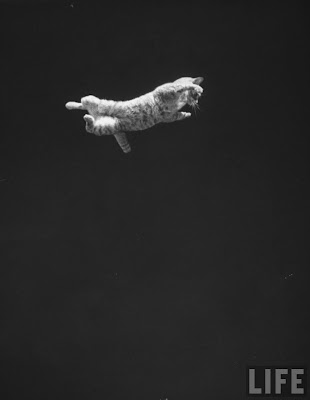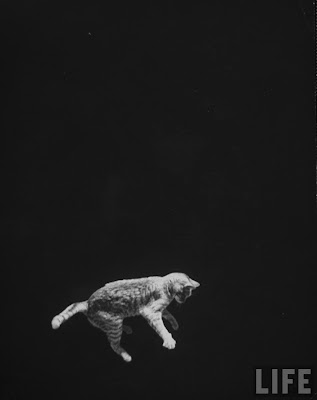


Look carefully: You can just make out Air Force Colonel Joseph Kittinger, Jr. in a record-shattering free fall from the very edge of space on August 16, 1960, after jumping from a balloon-supported gondola 102,800 feet above New Mexico. During his descent, Kittinger reached approximate speeds of 614 miles an hour. The clouds beneath him are 15 miles away. Kittinger's leap was part of the Air Force's "Project Excelsior," which conducted research into high altitude bailouts from aircraft. Incredibly, almost 50 years later, Kittinger's record for the longest-ever free fall and highest parachute jump still stand.














































